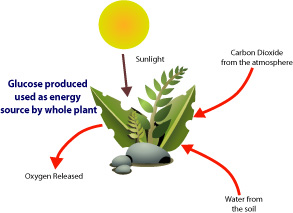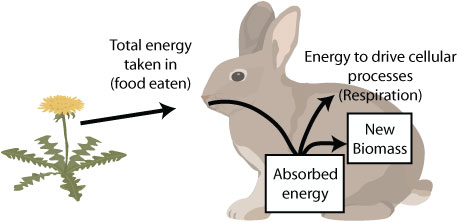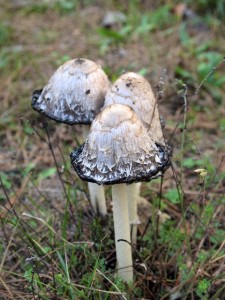2.5. 1: Producers, Consumers and Decomposers
The biotic community of any ecosystem can be divided simply into producers, consumers and decomposers.
 Producers or autotrophs are organisms that make their own organic material from simple inorganic substances. For most of the biosphere the main producers are photosynthetic plants and algae that synthesis glucose from carbon dioxide and and water.
Producers or autotrophs are organisms that make their own organic material from simple inorganic substances. For most of the biosphere the main producers are photosynthetic plants and algae that synthesis glucose from carbon dioxide and and water.
The glucose produced is used both as an energy source and combines with other molecules from the soil to build biomass. It is this biomass that provides the total theoretical energy available to all non photosynthesising organisms in the ecosystem.
 Consumers or heterotrophs are organisms that obtain organic molecules by eating or digesting other organisms. These are the herbivores and carnivores of the ecosystem. By eating other organisms they gain both food as an energy supply and nutrient molecules from within the biomass ingested. For instance to build new protein consumers have to eat protein contain amino acids.
Consumers or heterotrophs are organisms that obtain organic molecules by eating or digesting other organisms. These are the herbivores and carnivores of the ecosystem. By eating other organisms they gain both food as an energy supply and nutrient molecules from within the biomass ingested. For instance to build new protein consumers have to eat protein contain amino acids.
 Decomposers are the waste managers of any ecosystem. The are the final link in a foodweb breaking down dead organic matter (DOM) from producers and consumers and ultimately returning energy to the atmosphere in respiration and inorganic molecules bake to the soil during decomposition. Decomposers can be divided into two groups based on their mode of nutrition.
Decomposers are the waste managers of any ecosystem. The are the final link in a foodweb breaking down dead organic matter (DOM) from producers and consumers and ultimately returning energy to the atmosphere in respiration and inorganic molecules bake to the soil during decomposition. Decomposers can be divided into two groups based on their mode of nutrition.
- Detritivores are an organisms that ingest non-living organic matter. These can include earthworms, beetles and many other invertebrates.
- Saprotrophs are organism that lives on or in non- living organic matter, secreting digestive enzymes into it and absorbing the products of digestion. These include Fungi and bacteria.